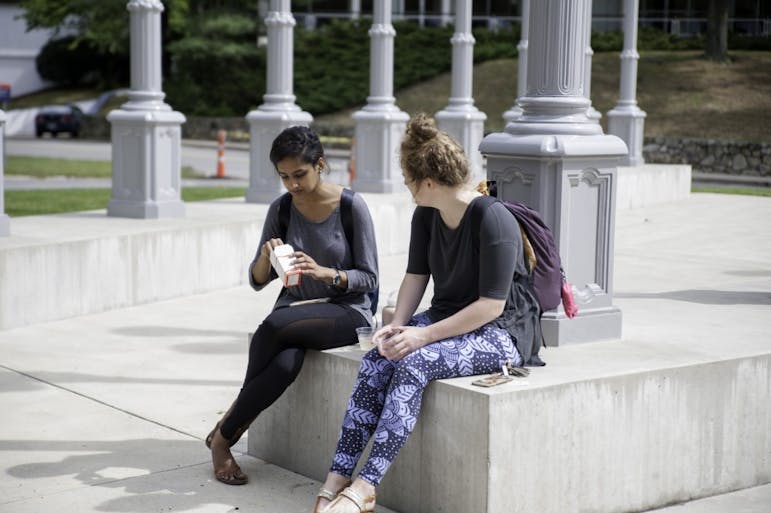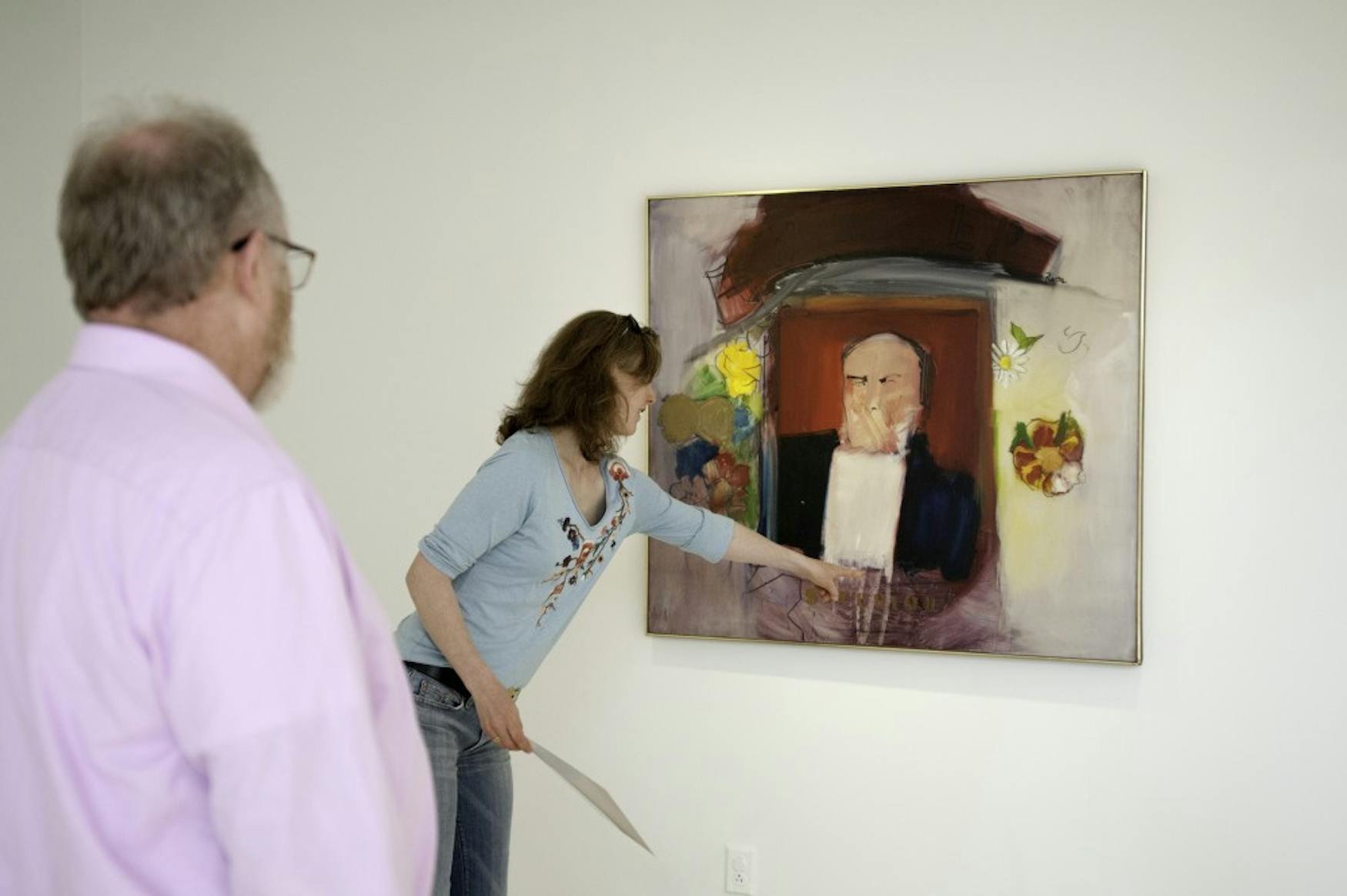New Rose exhibition is introspective and inviting
The Rose Art Museum hosted a partial opening this past Thursday to kick off the fall semester’s exhibitions. The opening, which boasted free popcorn, cotton candy and lemonade, offered the public the opportunity to see new works, some of which, unfortunately, are not part of the Rose’s permanent collection. One of the exhibitions, titled “Body Talk” welcomes interesting conversation about abstract yet relevant ideas — a great example of how art can mesh aesthetic and message. Of the four shows downstairs, including a collection of Joe Bradley’s work as well as an exhibition curated by Bradley himself, only three were open, including a new film by John Akomfrah and Kevork Mourad’s “Immortal City.”
My favorite exhibition is curated by Luis A. Croquer, the Rose’s new Henry and Lois Foster Director and Caitlin Julia Rubin, the Rose’s Assistant Curator, titled “Body Talk.” It’s not easy to talk about the human body through a perspective that isn’t biological or anatomical; the conditioning of social stigma toward an unclothed body proves to be quite strong even today. “Body Talk,” however, challenges that idea. All works are laid out in the open, depicting different interpretations of the body, some more abstract and possibly difficult to notice initially, others less obscure. Some of the works are beautiful while others are more jarring, belonging to a more campy style of art. For example, “Horizon with Hands” by Joan Semmel is a realistic painting of a naked body with a practically flawless complexion. Conversely, Robert Melee’s “I Witness Unit” consists of a base cluttered with various memorabilia and pictures of older naked women sporting garish makeup and posed wildly. But there’s more. “Le Cyclope Amoureux,” by André Masson, is entirely different, a surreal fantasy of shapes and lines that congregate subtly to depict a face. There are more pieces that warrant further analysis — works of different styles and art movements; I wholly recommend a full exploration of the entire exhibition.

PERUSING PIECES: A visitor studies one of the smaller works exhibited at the Rose Art Museum.
I talked to Ashley Loch ’20, who works at the Rose, about the collection and why it seems to have such wide appeal. We both agreed that, through the pieces, the collection conjoins the ugly and the beautiful. She explained, “What I love about the ‘Body Talk’ exhibit is that when you enter, it’s this journey that gets more and more disturbing as you go along, because it starts more vague and a lot more abstract, but then you are confronted with these cells that honestly look like a picture from a microscope. They are just so perfectly created, and it’s just insane to see these blown up to that extent, ... being able to see the beautiful aspects and the ones that are idealized but also the parts that are just so disturbing that we try to avoid. I think it just makes it an inclusive, all-encompassing exhibit.” By “cells,” Loch is referring to a painting by Carrie Moyer, which is a large, vivid piece of dark, pinkish-red circles of different shapes across a white canvas. This can be interpreted as a microscopic image of the cells — a more literal iteration of the “Body Talk” theme. Also, through a very similar anatomical perspective, “Needed-Erase-Her” by Hannah Wilke is a smaller piece which consists of multiple little structures constructed out of chewing gum resembling the vagina.
Something I took away from “Body Talk,” is that art doesn’t have to make you feel comfortable. Rather, it aims to express an individual message — one that can be off-putting in the traditional sense but still important. Depicting bodies that don’t match those in Vogue spreads doesn’t make the work any less beautiful or any less potent in its intention. If anything, it adds on to the conversation that the human body is so powerful by its invoking of different reactions. It embraces what is “ugly” in normative standards and puts it all out there. These “out of the ordinary” pieces are still strangely beautiful, and the act of displaying them is also strangely beautiful in itself, in addition to it being bold. These pieces makes you feel the same sort of feeling as, say, looking at a work which displays a conventionally pretty body. All are so incredibly diverse, though they all contribute to this same discourse about “body.” In my opinion, “Body Talk” is one of the most innovative and satisfying collections the Rose has offered within the last few semesters, not only because discussion of the body is usually avoided, but also because of the special statement each piece makes.

LIGHT OF REASON: Two students have a snack by the Light of Reason during the Rose Art Museum open house.
This exhibit truly left me in awe. The other collections on display at the Rose, available at the moment, stunned me, as well; however, I felt there was something extraordinary about “Body Talk” — definitely my favorite exhibition I’ve seen thus far. If you’re interested in participating in an artistically moving experience, I would highly recommend checking out “Body Talk” as soon as possible.
—Editor’s note: Hannah Kressel ’20, who is the Arts Editor of the Justice, is a Guide at the Rose and involved in the Student Committee for the Rose Art Museum.



Please note All comments are eligible for publication in The Justice.